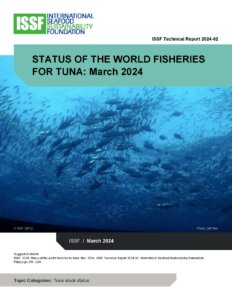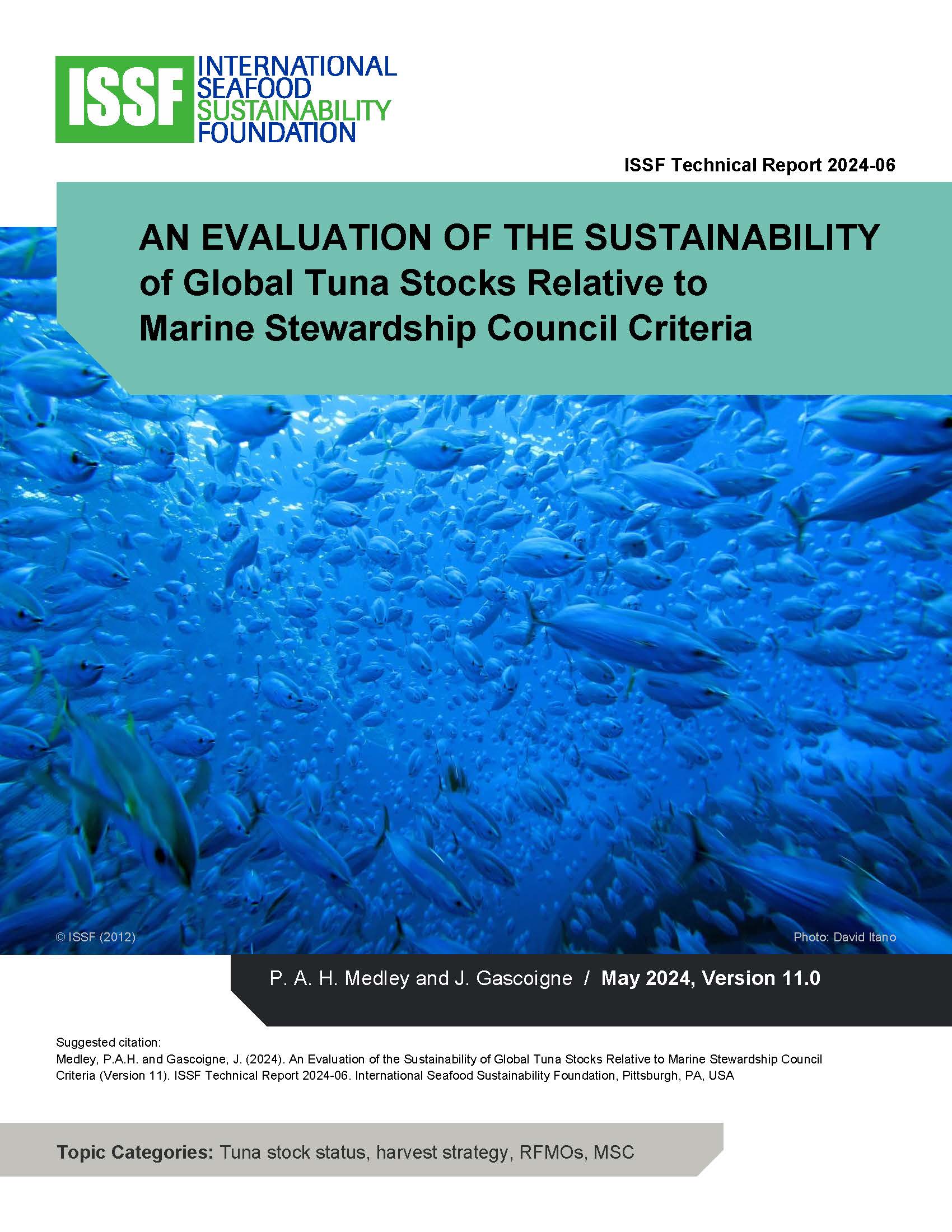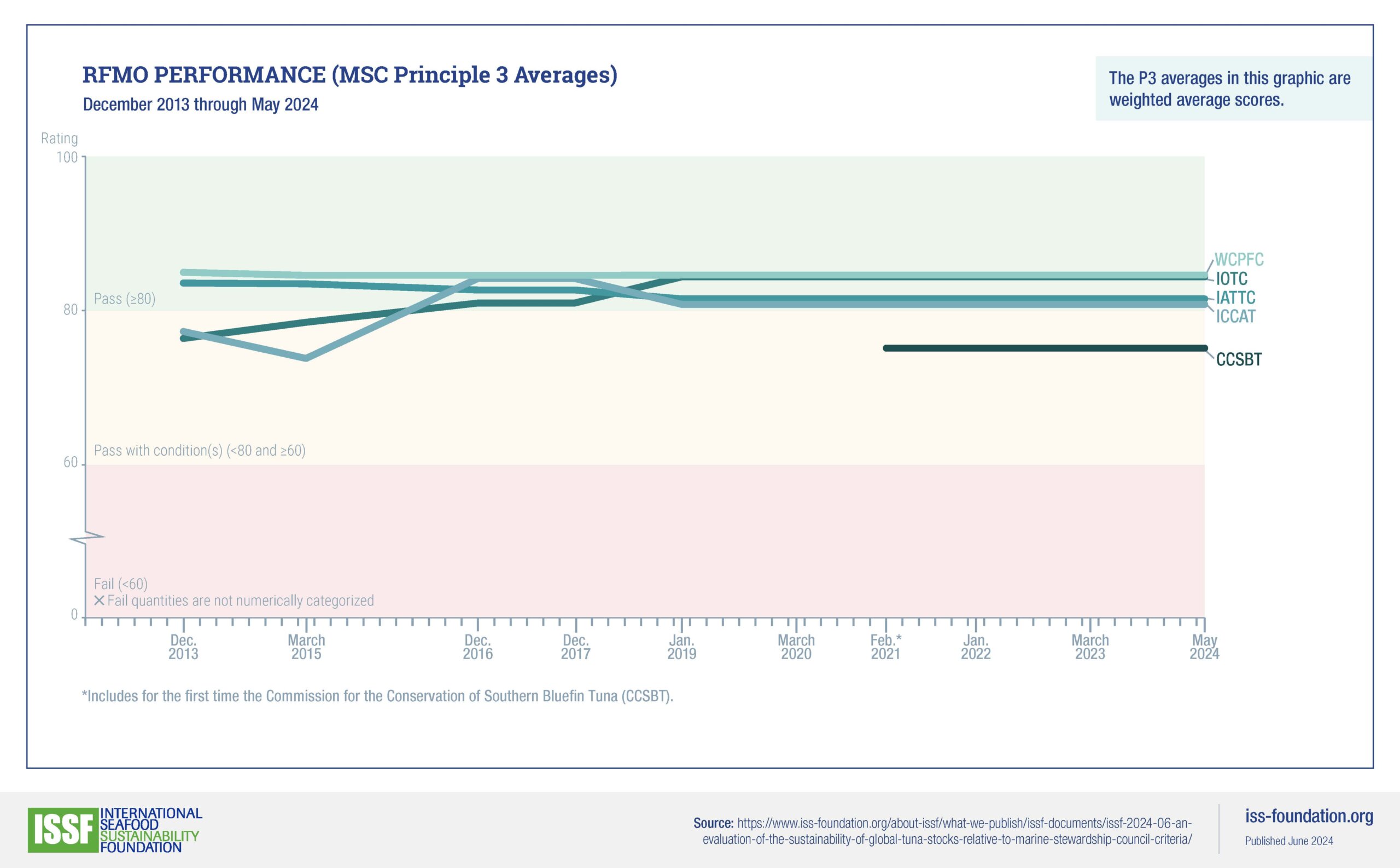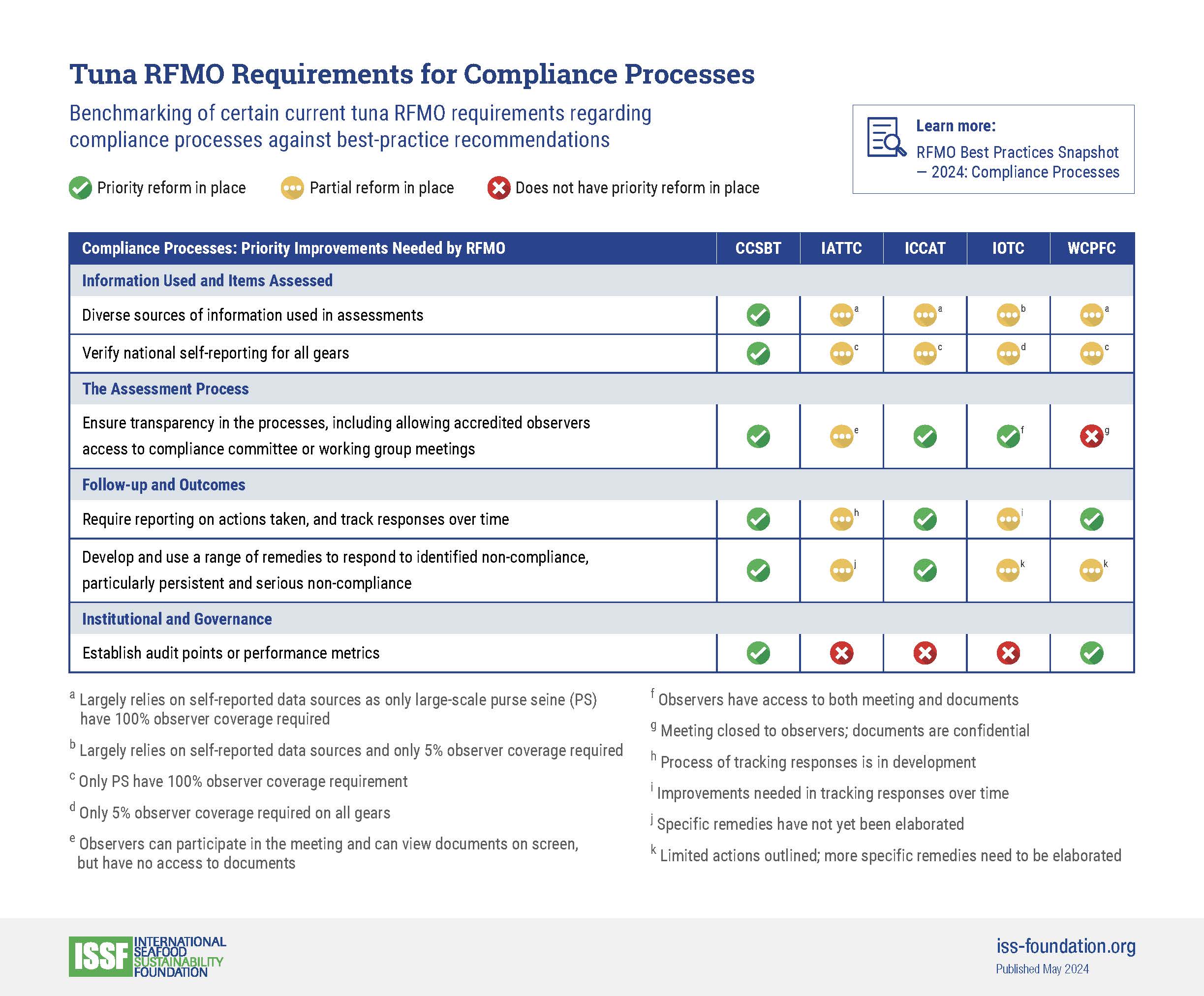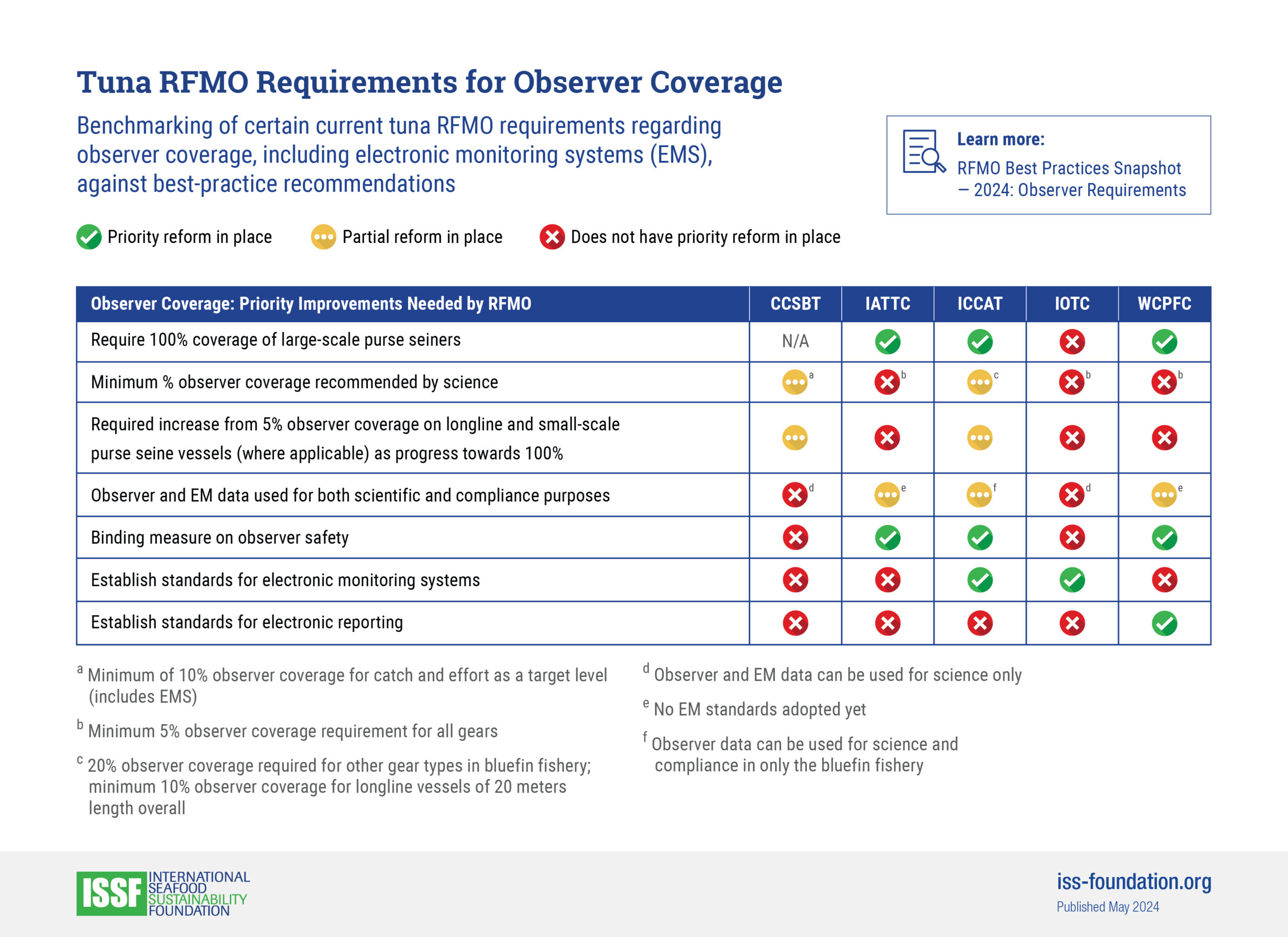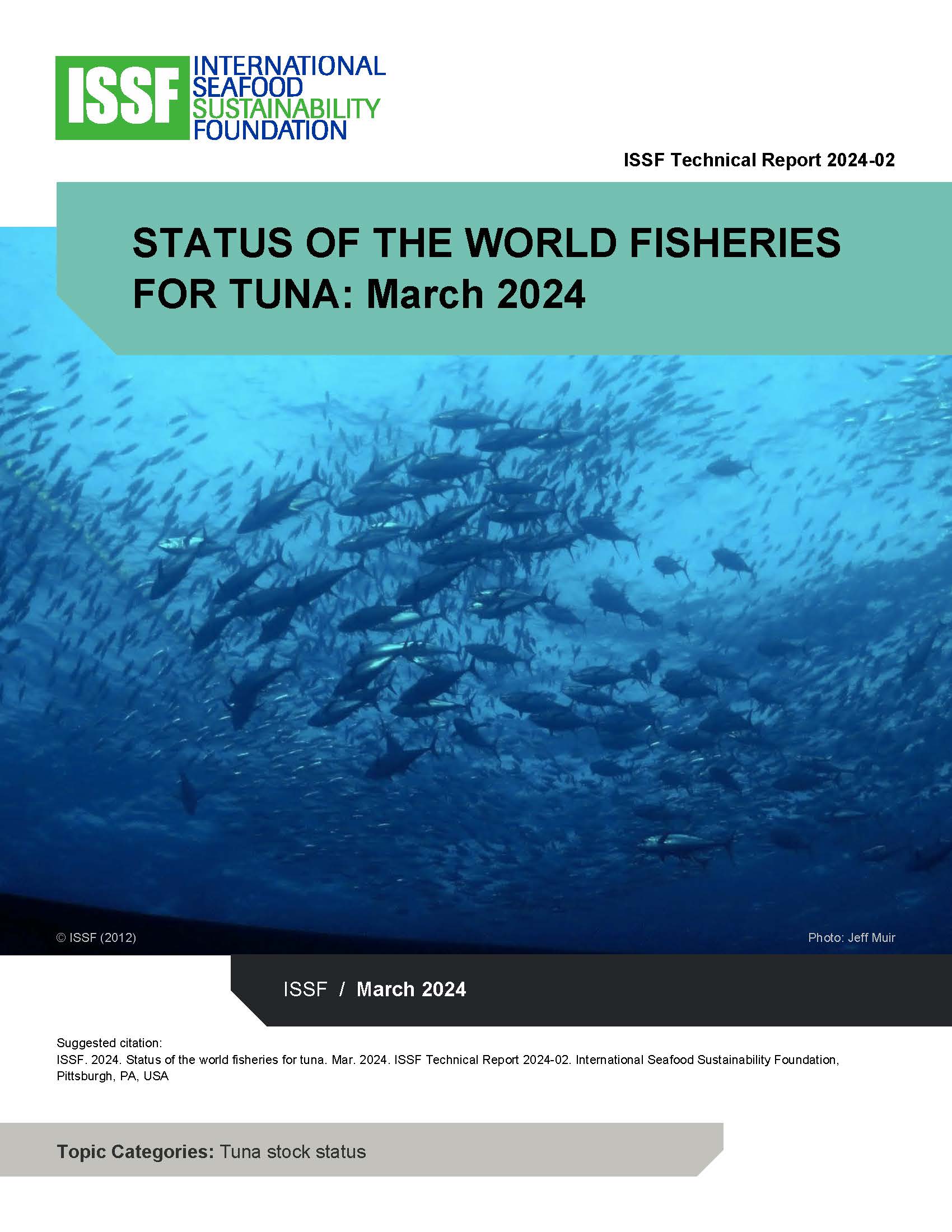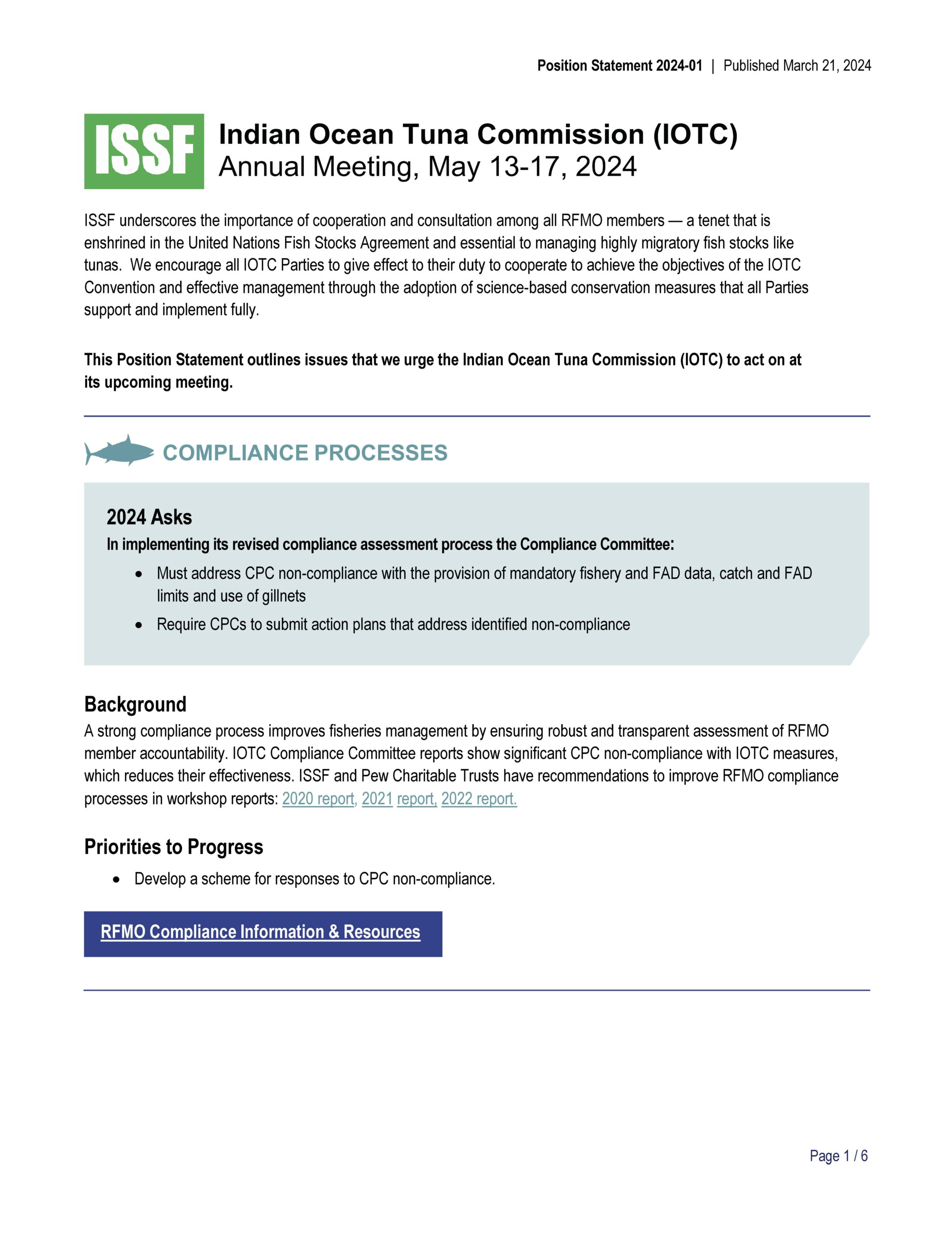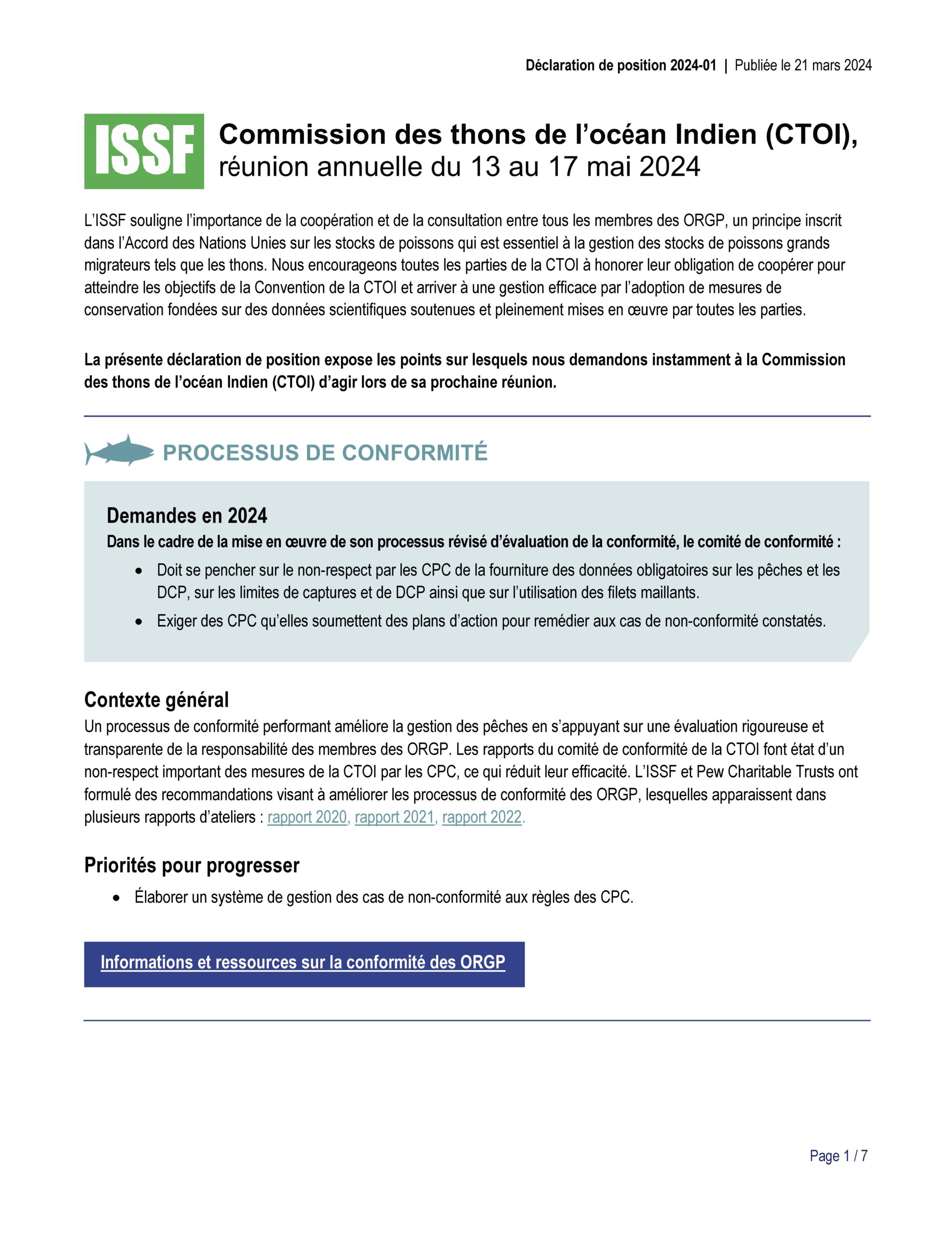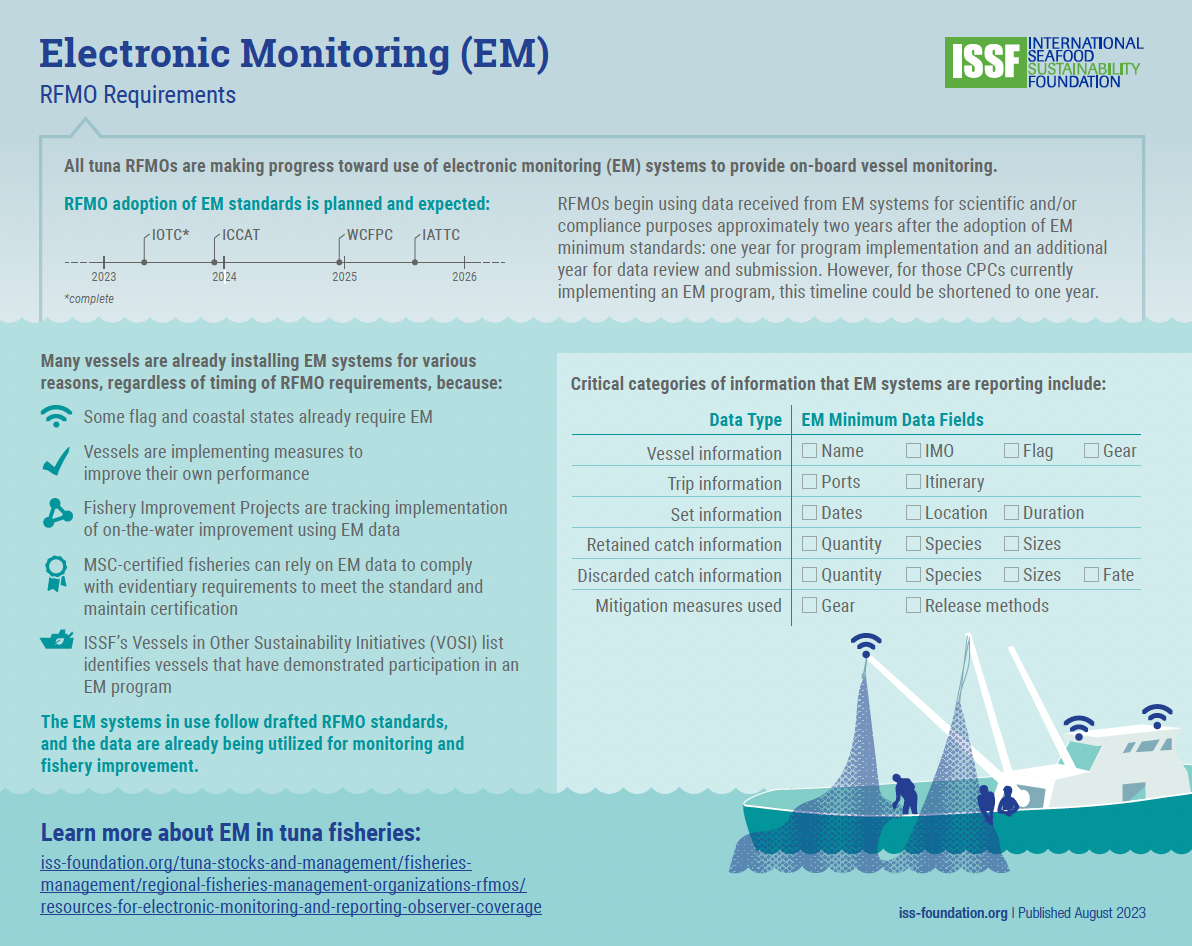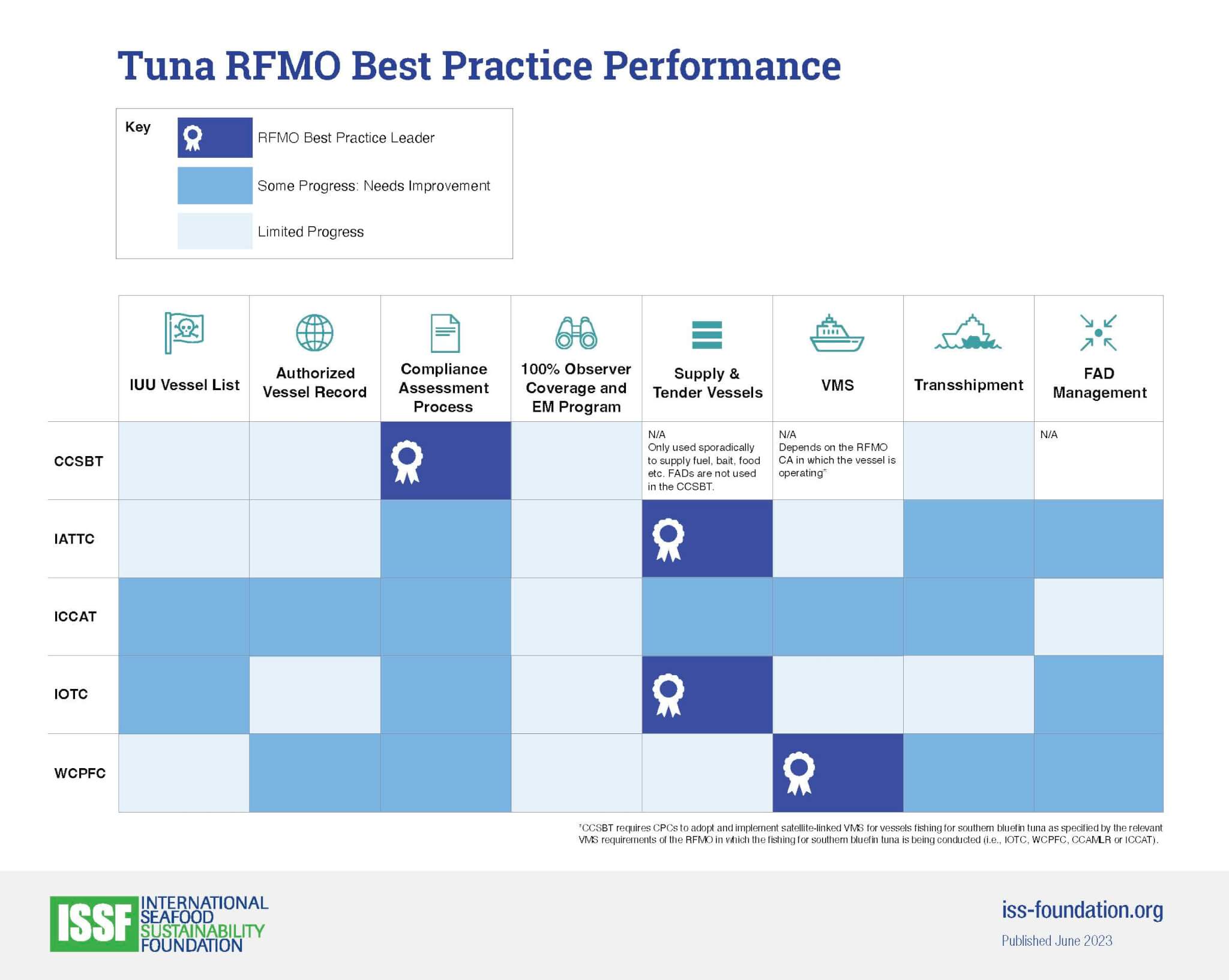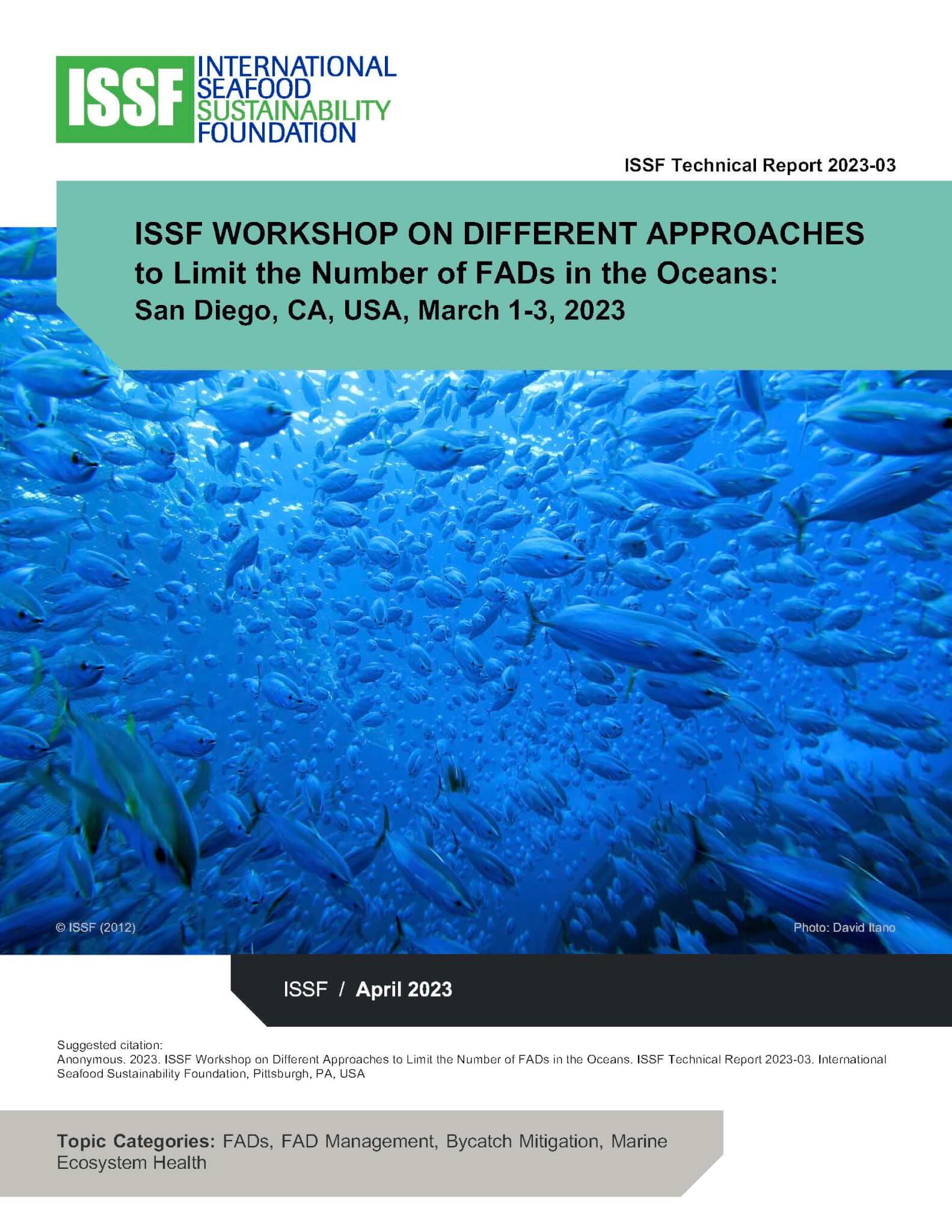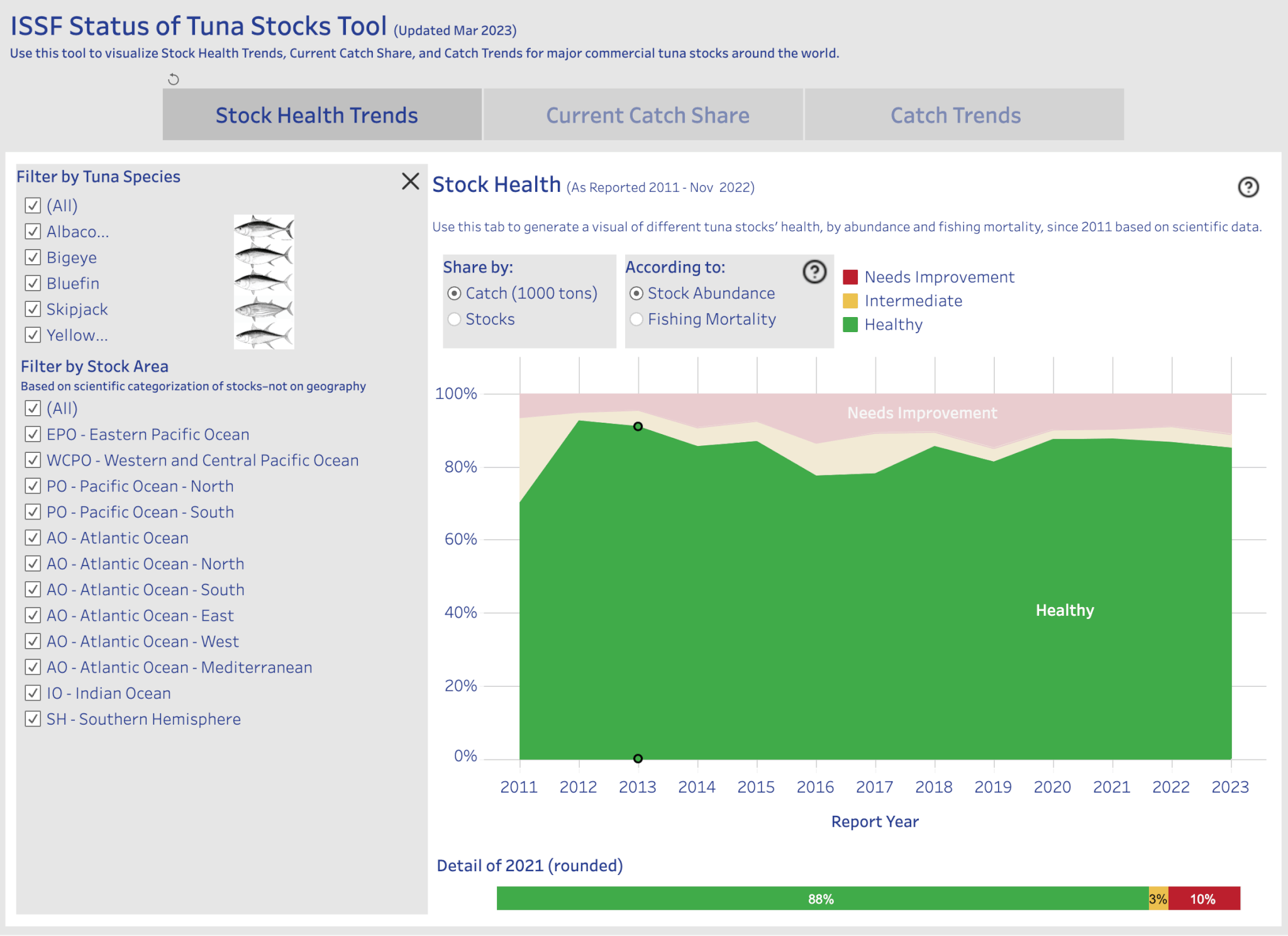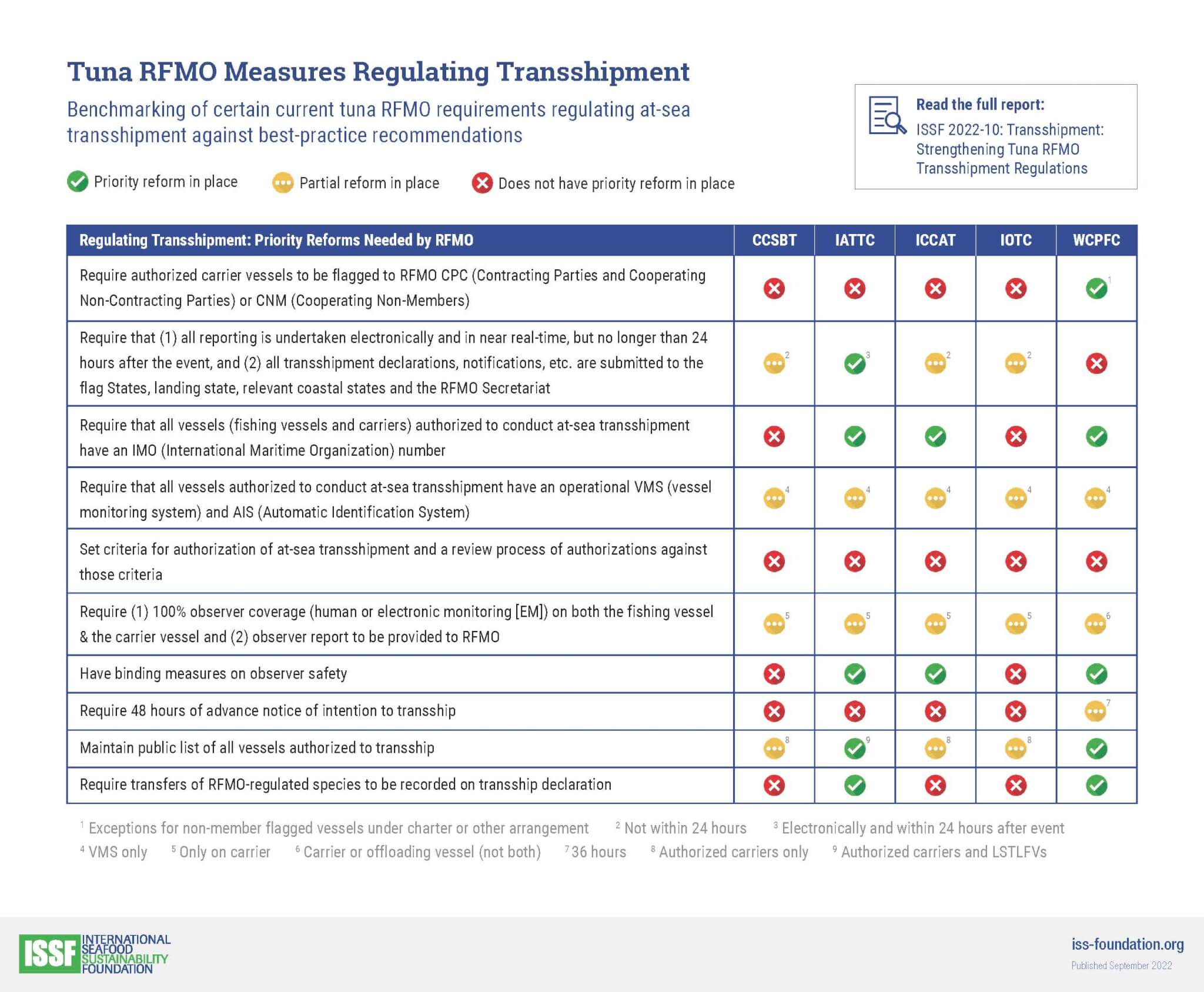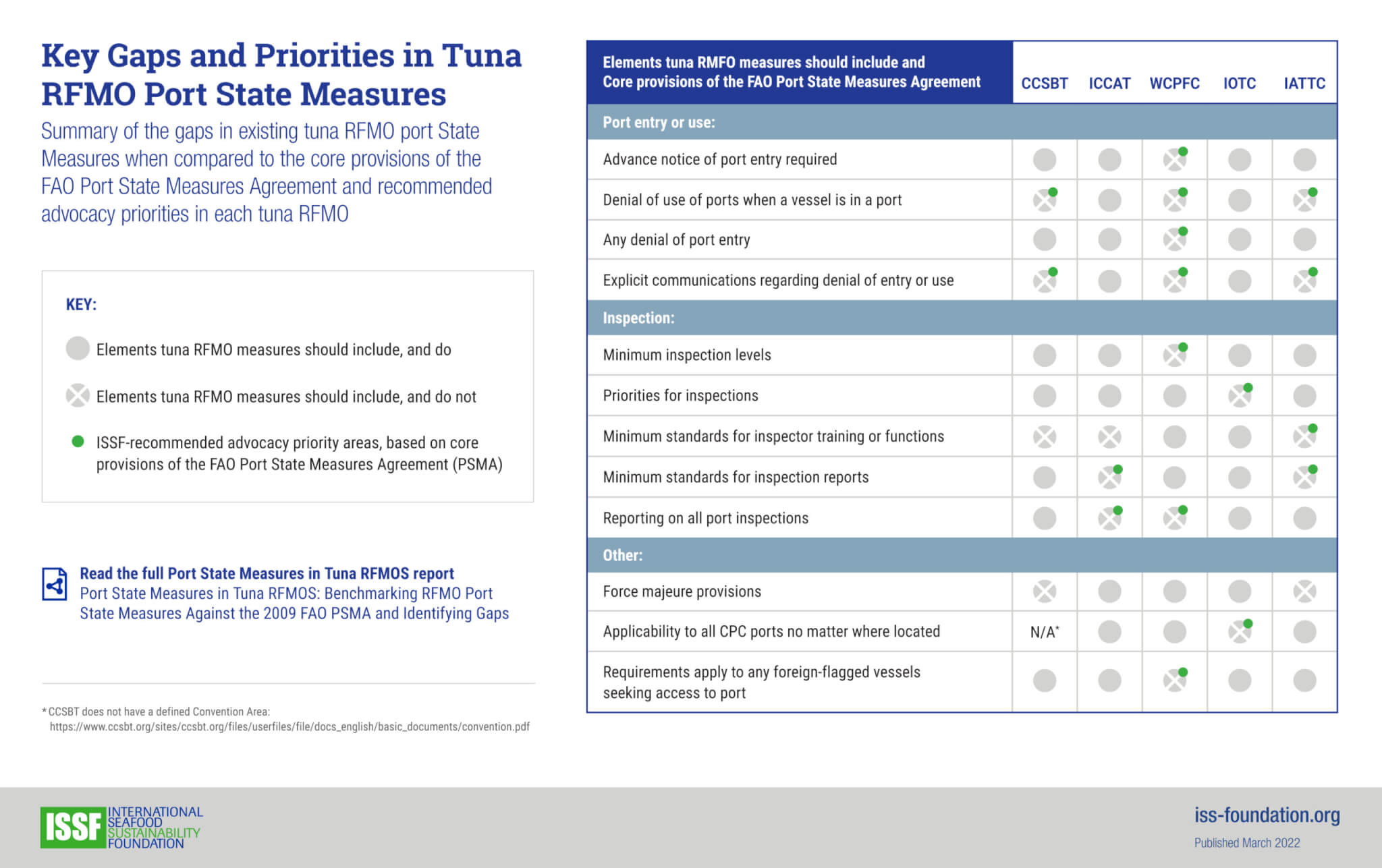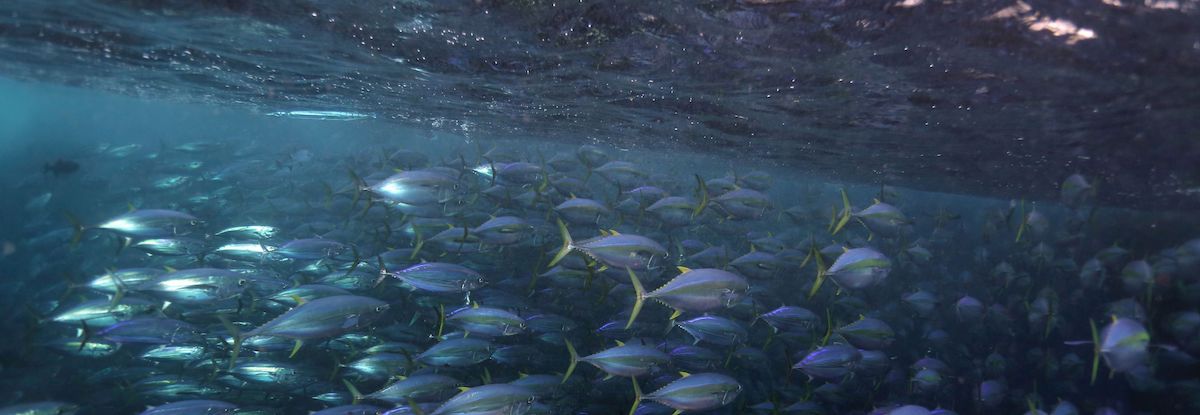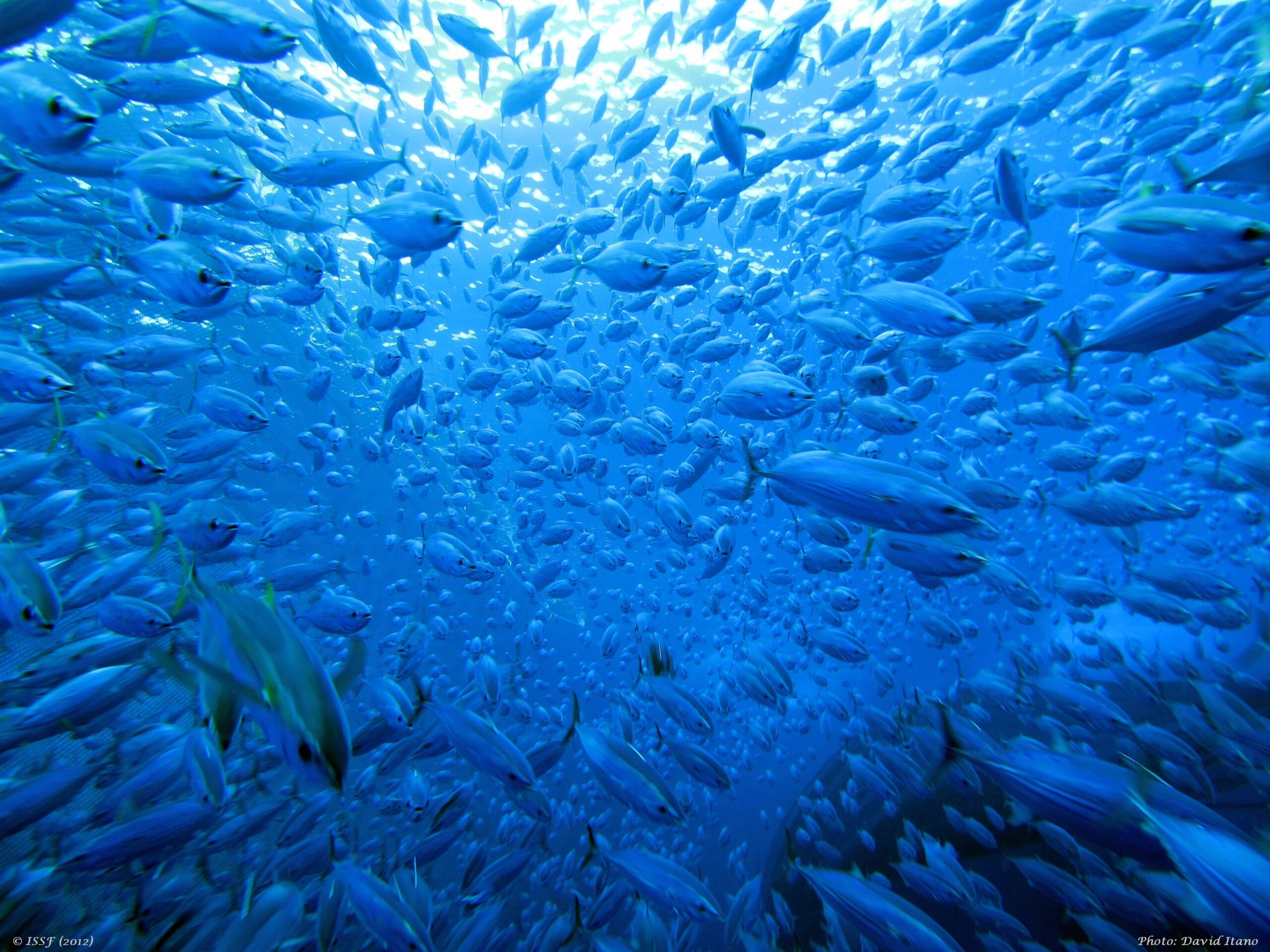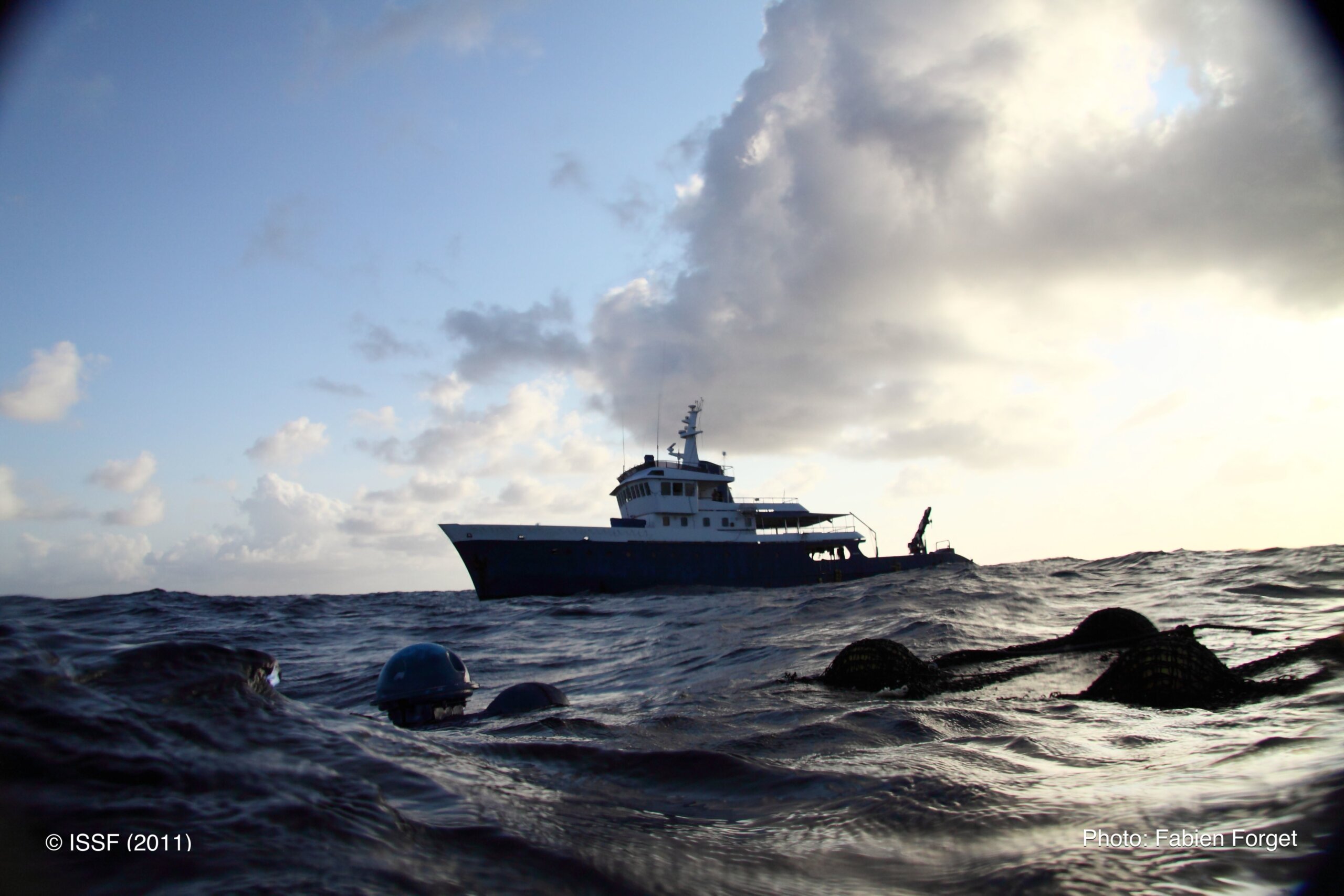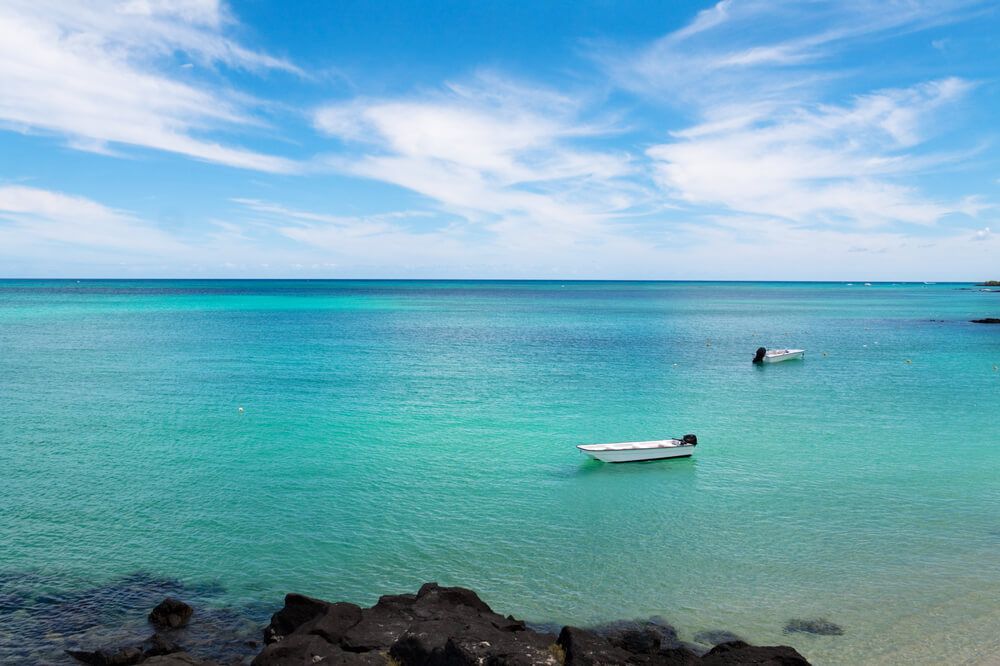
Indian Ocean Tuna Commission (IOTC)
The Indian Ocean Tuna Commission (IOTC) was established under Article XIV of the FAO Constitution and is responsible for the management of tuna and tuna-like species in the Indian Ocean and adjacent seas, north of the Antarctic Convergence.
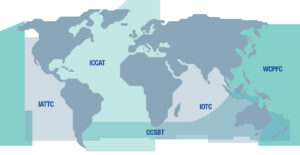
IOTC was developed in 1993 and entered into force in 1996. The Secretariat was established in Seychelles in 1998. IOTC includes 31 members.
Unlike other tuna RFMOs, the IOTC was created within the framework of the UN Food and Agricultural Organization’s (FAO) Constitution. However, the Commission is fully autonomous, both functionally and financially, with the budget supported entirely by member contributions.
Stock Status & Management Measures
- ISSF benchmarks the tuna-fishery policies of IOTC and other tuna RFMOs to a series of best practices we document in reports and “snapshots.”
- We also issue detailed position statements for each RFMO to help guide decision-making at their annual meetings, which ISSF scientists and policy experts often attend.
- In addition, we produce a “Status of the Stocks” report, which summarizes and rates the status and management of 23 major commercial tuna stocks, and an “Interactive Stock Status and Catch” tool.
- Our report ISSF 2024-03Rev: Tuna Fisheries’ Impacts on Non-Tuna Species and Other Environmental Aspects: 2024 Summary examines the effects of different tuna-fishing methods, summarizing each RFMO’s related management measures for protecting both non-tuna and Endangered, Threatened, and Protected (ETP) species.
IOTC OVERVIEW
See a list of nations that are members of IOTC.
Article V: “…ensuring, through appropriate management, the conservation and optimum utilization of stocks…”
- Cetaceans
- Swordfish
- Marlins
- Sharks
- Sea turtles
- Seabirds
Open to FAO members that are either coastal States to the IOTC Convention Area or that engage in fishing for tunas in that area.
IOTC responsibilities include:
- Ongoing review of conditions and trends of the stocks of tuna and tuna-like fish
- Encouraging, recommending, and coordinating research and development activities
- Adopting conservation and management measures to ensure conservation of the stocks
- Reviewing the economic and social aspects of fisheries, bearing in mind the interests of developing coastal states
Members elect an executive secretary, who is responsible for the operation of the Secretariat. The Secretariat acts as technical facilitator of the IOTC process. Most scientific work is conducted by national scientists and reviewed by the IOTC Science Committee, which formulates advice and proposes conservation and management measures. The full commission must agree by at least a two-thirds majority
The IOTC Convention makes no explicit mention about the Precautionary Approach or ecosystem considerations. The Precautionary Approach was formally adopted in 2012 through a Resolution. The Commission requires data for non-target species that are caught in Indian Ocean tuna fisheries.
The Scientific Committee (SC), composed of representatives from each Commission member, is responsible for all scientific work and providing scientific advice on management measures. The Secretariat plays primarily a facilitating role by assisting members on scientific and compliance matters, organizing meetings, maintaining databases and conducting preparatory analyses in support of the subsidiary Committees. The stock assessments are carried out by species-specific Working Parties of the SC.
Decisions taken by IOTC are generally done by consensus, although voting procedures are established in which conservation and management measures are agreed to by two-thirds majority vote of members present and voting, and are binding on all Commission members. However, there is an ‘opt-out’ clause: any member can file an objection to the measure, and by doing so is not bound by it. Binding decisions are called “Resolutions.”
ISSF CONTRIBUTIONS
“Some Hits, Some Misses for Indian Ocean Tuna Resources at IOTC Annual Meeting” (May 16, 2023, blog)
RELATED RESOURCES
-
IOTC Quick Links
IOTC at a Glance
Established: 1996. IOTC was established under Article XIV of the FAO Constitution (it is the only Tuna RFMO established in this way).
Headquarters: Victoria, Seychelles
Area of Competence: The Indian Ocean (IO, defined for the purpose of the Agreement as being FAO Statistical Areas 51 and 57), and adjacent seas, north of the Antarctic Convergence. In 1999, the Commission extended the western boundary of the IOTC statistical area from 30ºE to 20ºE, thus eliminating the gap in between the areas covered by the IOTC and ICCAT.
Tuna Catches in IOTC’s Region
Use our “Interactive Stock Status and Catch Tool” to visualize the current tuna catch — and catch trends over time — in the IOTC region.
Download the data in different file formats, and generate custom graphics to share via email, X, or Facebook.
FIPs in IOTC’s Region
Browse our Tuna FIPs list to find Fishery Improvement Projects in IOTC’s ocean region — or any other tuna RFMO region.
